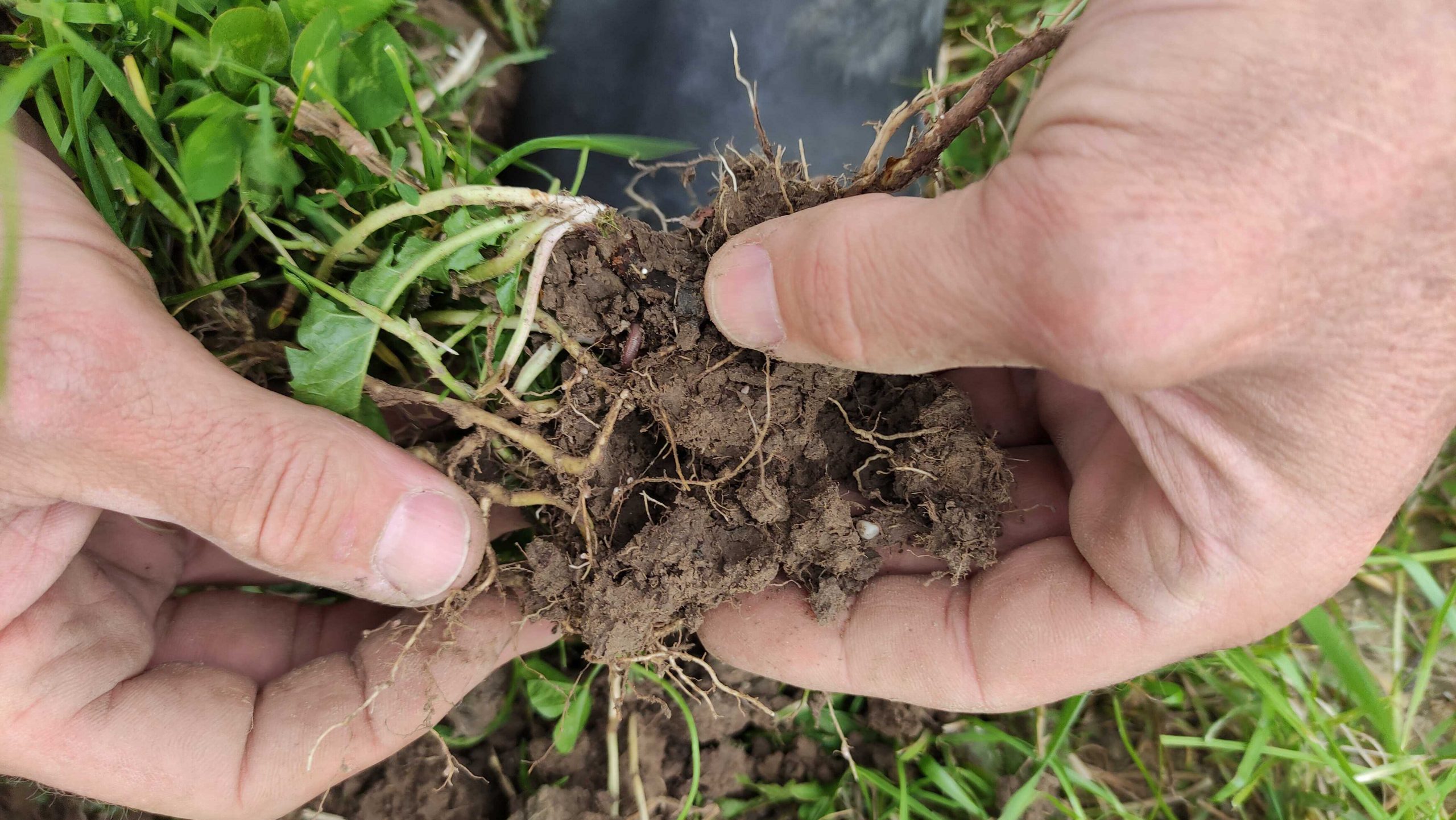”Soil is essential for the maintenance of biodiversity above and below ground. The wealth of biodiversity below ground is vast and unappreciated: millions of microorganisms live and reproduce in a few grams of topsoil, an ecosystem essential for life on earth
From: Australian Soils and Landscape, An Illustrated Compendium
If it ain’t broke don’t fix it, right?… but maybe it is broke.
Over the centuries, modern agriculture has advanced significantly, leading to the highly researched, technical systems and unprecedented production levels that we have today. Developments allowing agriculture to evolve and expand include increased availability and use of synthetic fertilisers, herbicides, and pesticides; genetic improvements; increasing understanding of plant and animal nutrition and improved mechanical equipment. All leading to efficiencies for production systems and the resulting development of global markets and delivery.
Unfortunately, soil biological responses to these developments were often overlooked or not recognised, with greater emphasis on physical and chemical manipulation than on soil biology. Agriculture’s evolution has also resulted in unintended consequences, especially regarding soil health, environmental impact, and long-term agricultural sustainability.
Quality is key
Soil quality can be simply defined as “the capacity of the soil to function.” Important soil functions include water flow and retention, solute transport and retention, physical stability and support; retention and cycling of nutrients; buffering and filtering of toxic materials; and maintenance of biodiversity and habitat. Fertile soils teem with microorganisms, which directly contribute to the biological fertility and functions of that soil.
In addition to fertility, soil microorganisms also play essential roles in the nutrient cycles that are fundamentally important to life on the planet. In the past, agricultural practices have failed to promote soil health through healthy populations of microorganisms. Not doing this limits production yields and threatens sustainability.
So, can we fix it?
Scientific research is exploring new and exciting possibilities for the restoration and promotion of healthy microbial populations in the soil, with significant benefits in both net production and environmental outcomes. Biological fertility is under-studied and our scientific knowledge of it is incomplete, however, new research and field trials are delivering a quiet confidence that modern agriculture can again evolve, and that this evolution of biological practices will benefit the animals, the farmer and the planet.
Soil health and fixing carbon
Soil microorganisms are both components and producers of soil organic carbon, a substance that locks carbon into the soil for long periods. Abundant soil organic carbon improves soil fertility and water-retaining capacity. There is a growing body of research that supports the hypothesis that soil microorganisms, and fungi in particular, can be harnessed to draw carbon out of the atmosphere and sequester it in the soil.
Soil microorganisms may provide a significant means of reducing atmospheric greenhouse gases and help to limit the impact of greenhouse gas-induced climate change.
Soil health and fixing nitrogen
Nitrous oxide emissions are produced by a range of bacteria in the soil, which convert nitrate into nitrous oxide. These losses are greatest when soils are warm and waterlogged, and in those with high nitrate contents. It is vital environmentally, to apply nitrogen fertilisers only at times, and in quantities and forms, useful to plants – overuse of fertiliser can vastly increase levels of emissions.
Nitrous oxide is a more potent greenhouse gas than carbon dioxide. One unit of nitrous oxide is equivalent to 310 units of CO2. Conventional tillage also releases more CO2 into the atmosphere than no-till systems and results in more carbon being respired by the microbial community. No–till systems tend to lock up more carbon in the form of organic matter.
”A large soil microbial community can tie up carbon and nitrogen that might otherwise be released into the atmosphere as greenhouse gases and in addition, make these nutrients more readily available for plant uptake.
The impact of soil health on phosphorus and biology
Phosphorus is a major nutrient with dwindling global supplies and rising prices. Only a small amount of P applied is taken up by plants in the year of application. The remaining P becomes sequestered in the soil, with limited availability to plants, or is lost by erosion and leaching to the watershed where it may impact downstream ecosystems and water quality. Similarly, only about one-quarter of annually applied N is taken up by crops in the year of application; some of the remaining N enters the watershed by leaching.
Nutrient-use efficiency is often defined based on the amount of N or P accumulated by a crop in comparison to the amount applied. However, a portion of the P and N in the crop has originated from within the soil, where it was already present and probably in a stable organic form. Therefore, traditional nutrient use efficiency calculations often overestimate the efficiency of fertiliser application and fail to reflect the applied nutrients that were lost from the soil by leaching and/or erosion.
Research aims to reduce inputs, while increasing the amount being provided by the soil through biologically fixed N, or mineralisation of P and N from organic matter. In the case of P, there are substantial amounts of P already in the soil, unavailable to plants without the appropriate microorganisms and proper levels of activity. By considering the nutrient balance of the entire system, agricultural soils could be managed to stabilise at lower soil nutrient levels that make more efficient use of soil mineral resources.
Some P exported with the crop will have to be replenished from external sources, but there is great room for improvement in promoting organic P cycling in soils and biological mobilisation of “occluded” P already present in the soil.
It’s time to do something different
The challenge for modern agriculture, going forward, is to implement more sustainable farming systems that are economically viable and accommodate changing technologies and climate. The production of food and fibre continues to increase agriculture’s carbon footprint through the increased use of fuel and fertiliser and contributes to widespread soil and water quality degradation. To decrease this footprint, nutrient management and soil health in sustainable systems must be a top priority.
Soil biology is the foundation for soil health and the biological processes which determine nutrient availability to plants allowing for a decreasing reliance on synthetic fertilisers. You can see nature in action in our blog post on the Kauri forests in Waipoua.
In addition, helping to buffer plants from changes in water availability and pest, pathogen, and weed pressures. It is key to reversing the degradation of soils by modern agriculture practices; key in the evolution of agriculture in both an environmental and economically sustainable manner; key to ensuring the enduring ability to “Feed the World.”



